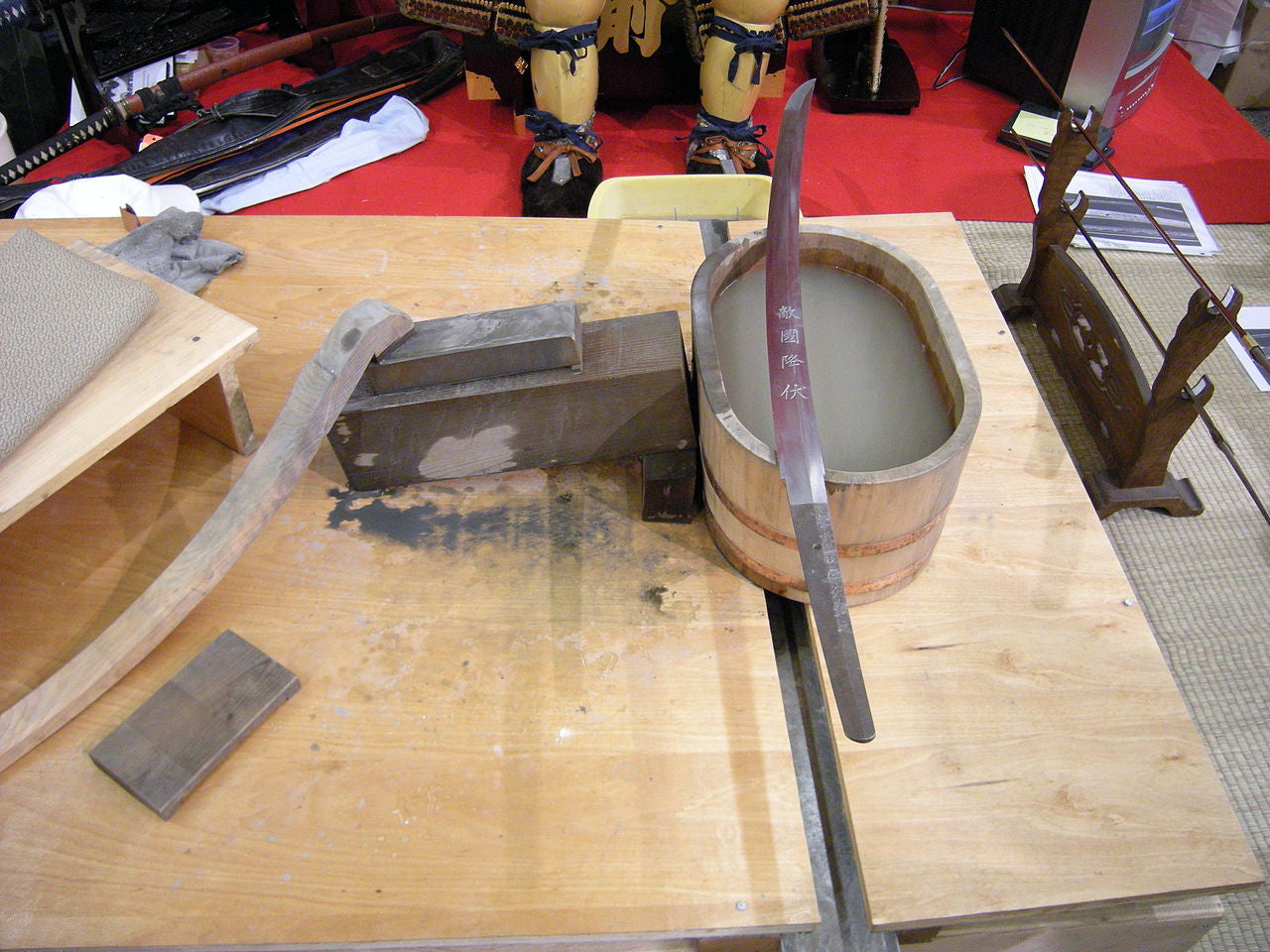Your Cart is Empty

 Forged-steel Japanese swords offer a superior level of craftsmanship and attention to detail. Whether it's a katana, tanto, wakizashi, nagamaki, tachi, nodachi or kadachi, you can rest assured knowing you are getting the finest quality sword with roots dating back thousands of years.
Forged-steel Japanese swords offer a superior level of craftsmanship and attention to detail. Whether it's a katana, tanto, wakizashi, nagamaki, tachi, nodachi or kadachi, you can rest assured knowing you are getting the finest quality sword with roots dating back thousands of years.
But Japanese swordmaking has evolved since the craft's early inception during the Heian period (794-1185). Thanks to modern advancements in the craft, Japanese swordmakers can forge and produce high-quality swords with intricate microstructures more easily. So, how exactly do these swordmakers produce these detailed microstructures?
Studies Sheds Light on Microstructure Creation
A recent study conducted by researchers from the Department of Materials Science and Engineering, Ehime University, Japan has shed light on the microstructure creation process in swordmaking. After analyzing several carbon-steel samurai swords, researchers concluded that the tamahagane sword is formed with microstructures featuring several “residual inclusions,” including oxide and phosphorus-based structures.
This study was published in the Journal of Material Sciences and Engineering.
A separate study conducted by researchers from the Shimane University, Japan found that microstructures in a Japanese sword consisted of a hard crystalline steel structure known as martensite. While this study involved an old sword, and therefore old swordmaking practices, modern swordmaking follows a similar approach by also using alloys like martensite (we explain below).
Damascus Steel
Some Japanese swordmakers use a special type of steel, known as Damascus steel, to achieve these microstructures. Damascus steel, also known as wootz steel, is unique in the sense that it possesses microstructures of fine ferrite (alpha-iron) and cementite lamellae, which is typically derived from forging and quenching. The end result is a stronger hardness and “toughness” when compared to other steels and metals.
Metal Alloys
In the examples cited above, alloy metals were used to achieve the microstructures in the respective swords. As explained in this article, steel often contains trace amounts of metals like chromium, vanadium, manganese, nickel and more. Depending on what metals are in the steel, it may produce microstructures naturally. In other cases, the swordmaker will add alloys for the purpose of creating microstructures; improve heat processing qualities; improve corrosion corrosion/rust resistance; and for other reasons.
Gizmodo further elaborates on the use of alloys in regards to microstructures, explaining that modern swordmakers continue to use steel as their preferred choice of alloy, but they also use property-tweaking elements like chromium and molybdenum to create microstructures.
Hopefully, this will give you a better understanding of microstructures and how they are created in Japanese steel swords.